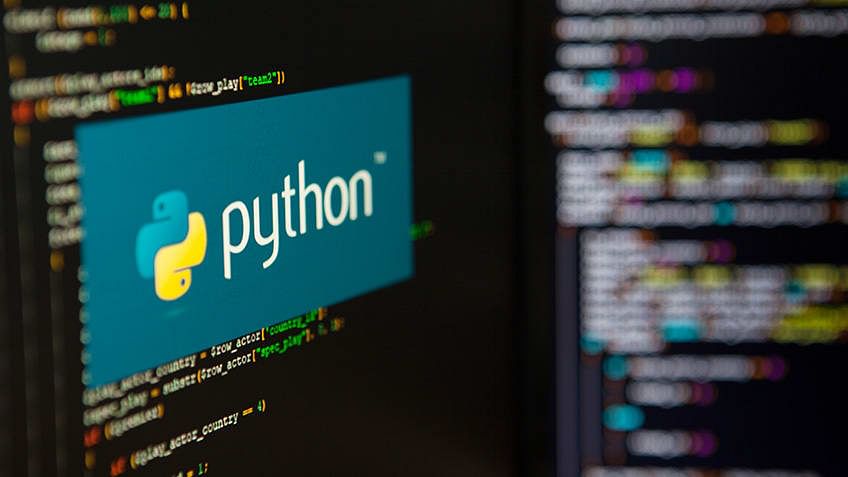Python, a high-level programming language, has taken the programming world by storm. Its focus on simplicity, readability, and versatility has propelled it to the forefront of diverse development domains. Whether you're a seasoned developer or just starting your coding adventure, Python offers a compelling blend of power and ease of use. This comprehensive guide delves into the core aspects of Python, exploring its strengths, applications, and the vibrant community that surrounds it.
Unveiling the Versatility: A General-Purpose Powerhouse
Unlike some languages confined to specific tasks, Python shines as a general-purpose language. It empowers you to tackle a wide range of programming challenges. From crafting dynamic and interactive web applications using frameworks like Django and Flask to crunching numbers for in-depth data analysis with libraries like pandas and NumPy, Python's adaptability knows no bounds. It seamlessly integrates into various development stages, making it a valuable asset for web developers, data scientists, and automation enthusiasts alike.
Interactive and Interpreted: Experimentation Made Easy
A key differentiator of Python is its interpreted nature. Unlike compiled languages like C++ or Java, where code is translated into machine code before execution, Python executes code line by line using an interpreter. This approach offers several advantages:
Rapid Prototyping: Experiment with code snippets and observe the results instantly, allowing for quicker iteration and refinement of your ideas.
Interactive Debugging: Identify and fix errors in your code as you write it, streamlining the debugging process.
Flexibility: Easily modify and test code without the need for recompilation, making development a more interactive and fluid experience.
Readability that Speaks Volumes: Code that Flows Like Natural Language
One of Python's most striking features is its emphasis on readability. The language's syntax is designed to be clear and concise, resembling natural language. This characteristic makes Python code:
Easier to learn: Beginners can grasp core concepts more intuitively, reducing the learning curve.
More maintainable: Code written in Python is easier for others (and your future self!) to understand, facilitating collaboration and code reuse.
Less prone to errors: Clear syntax minimizes the risk of typos and syntax errors, leading to more robust and reliable applications.
A World of Possibilities: Rich Standard Library and Thriving Ecosystem
Beyond its core functionality, Python boasts a comprehensive standard library. This library provides a rich set of built-in modules and packages that cater to common programming tasks, including:
File Handling: Read, write, and manipulate files with ease.
Networking: Establish connections, send and receive data across networks.
Data Manipulation: Efficiently work with various data structures like lists, dictionaries, and sets.
Text Processing: Clean, parse, and analyze textual data.
The true magic, however, lies in Python's vast ecosystem of third-party libraries and frameworks. These community-developed extensions empower you to tackle specialized tasks and cutting-edge applications. Here are some prominent examples:
Data Science and Machine Learning: Libraries like NumPy, pandas, TensorFlow, PyTorch, and scikit-learn provide powerful tools for data analysis, manipulation, and building intelligent systems.
Web Development: Frameworks like Django and Flask streamline web development, allowing you to focus on application logic rather than low-level details.
GUI Development: Create user-friendly graphical interfaces with libraries like Tkinter and PyQt.
Automation: Automate repetitive tasks with libraries like Selenium and PyAutoGUI.
With a vast array of libraries at your disposal, Python transforms into a language capable of handling virtually any programming challenge you can imagine.
Dynamic Typing and Automatic Memory Management: Freedom from Tedious Details
Python simplifies development by adopting dynamic typing. This means you don't need to explicitly declare the data type of a variable when you create it. Python infers the type based on the value assigned. This approach offers several benefits:
Reduced Code: Less code to write, making development faster and more concise.
Flexibility: Variables can hold different data types throughout the program, providing greater adaptability.
Another advantage of Python is automatic memory management. Unlike some languages where you need to manually allocate and deallocate memory, Python handles this process seamlessly through a concept called garbage collection. This frees you from the burden of memory-related errors and complexities, allowing you to focus on the core logic of your program.
Multiple Paradigms: A Language that Adapts to Your Style
Python's versatility extends beyond its general-purpose nature. It embraces multiple programming paradigms, allowing you to choose the approach that best suits your project's requirements:
Object-Oriented Programming (OOP): Model your code around real-world entities using classes and objects. This approach promotes code organization, reusability, and maintain


